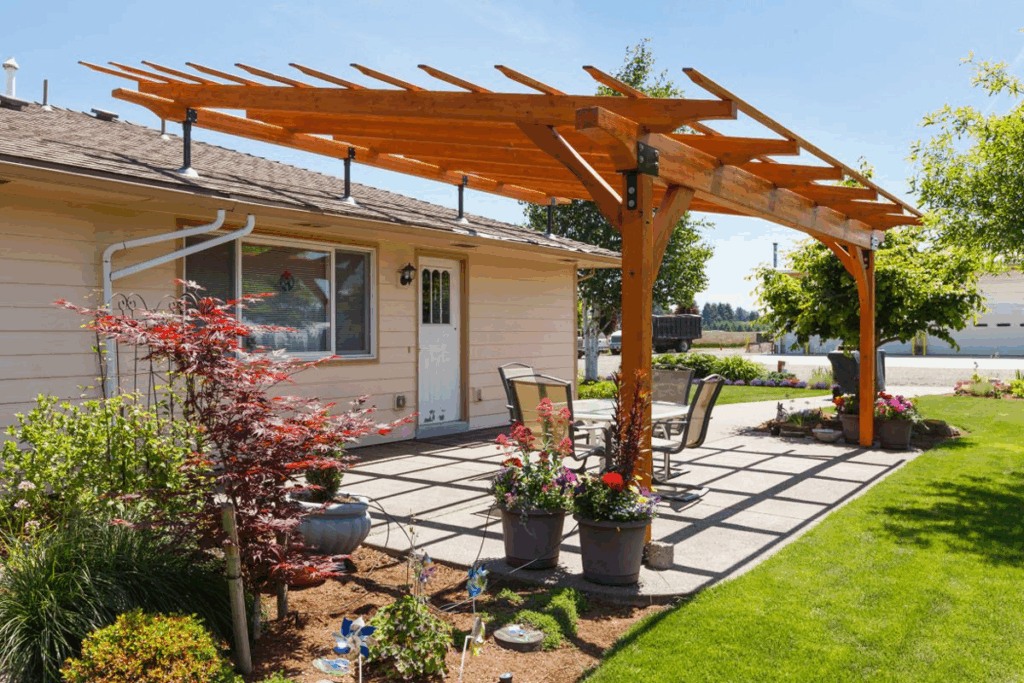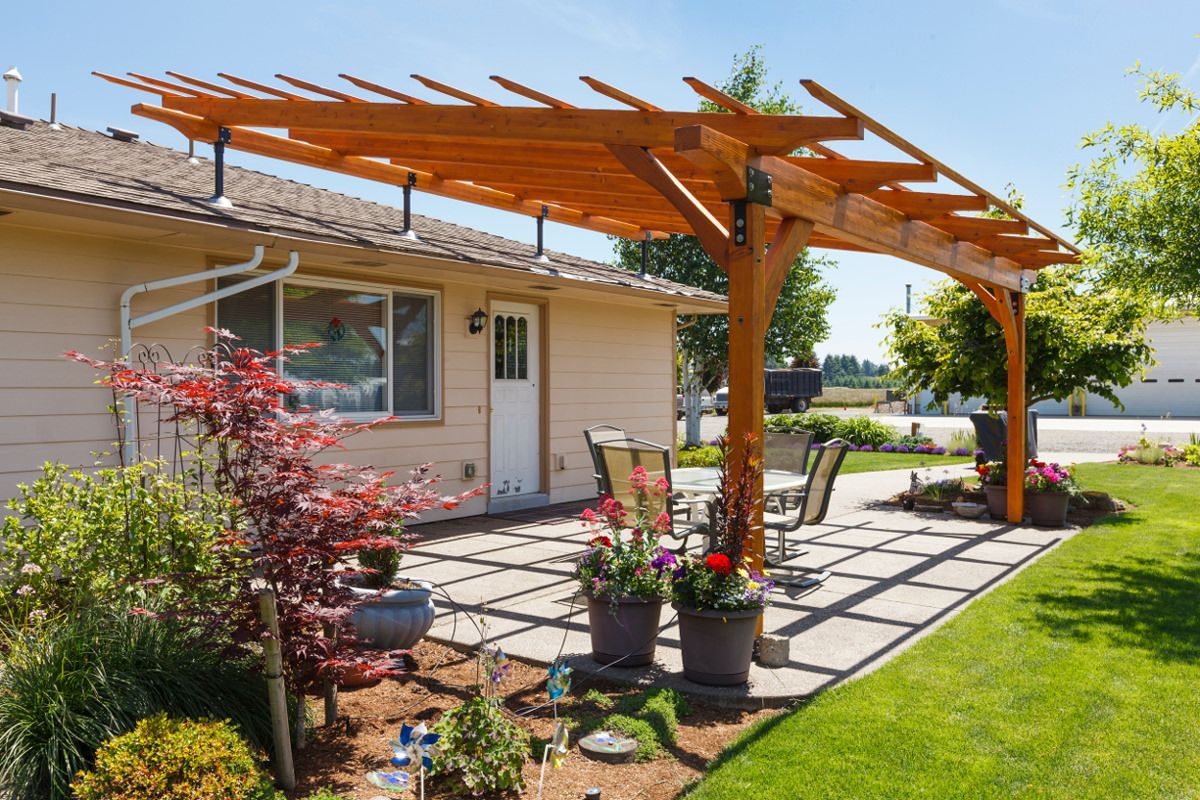
Patio Roof Extension: Enhancing Your Outdoor Living Space
A patio roof extension is a fantastic way to transform your outdoor space into a more functional and enjoyable area. Whether you’re looking to create a shaded retreat from the sun, a protected space for entertaining, or simply add value to your home, a well-designed patio roof extension can make a significant difference. This article will delve into the various aspects of patio roof extensions, covering design considerations, material choices, installation processes, and the overall benefits they offer.
Why Consider a Patio Roof Extension?
The appeal of a patio roof extension lies in its versatility and the numerous advantages it provides. Here are some key reasons why homeowners choose to invest in this type of home improvement:
- Protection from the Elements: A patio roof extension shields you and your outdoor furniture from harsh sunlight, rain, and snow, allowing you to enjoy your patio year-round.
- Increased Living Space: By creating a covered outdoor area, you effectively expand your living space, providing a comfortable area for relaxation, dining, or entertaining.
- Enhanced Home Value: A well-built patio roof extension can significantly increase the value of your home, making it a worthwhile investment.
- Energy Efficiency: By shading your patio and the adjacent rooms, a patio roof extension can help reduce your energy consumption and lower your cooling costs.
- Aesthetic Appeal: A thoughtfully designed patio roof extension can enhance the overall aesthetic appeal of your home, creating a seamless transition between indoor and outdoor living spaces.
Design Considerations for Your Patio Roof Extension
Before embarking on a patio roof extension project, careful planning and design are essential. Consider the following factors to ensure a successful outcome:
Style and Aesthetics
The design of your patio roof extension should complement the existing architecture of your home. Consider the roofline, materials, and overall style to create a cohesive look. Common styles include:
- Attached Patio Covers: These are directly attached to the house, creating a seamless extension of the existing roof.
- Freestanding Patio Covers: These are independent structures that can be placed anywhere in your yard.
- Pergolas: Offering partial shade, pergolas are an aesthetically pleasing option that can be customized with climbing plants.
- Solid Roofs: Providing complete protection from the elements, solid roofs are ideal for creating a fully functional outdoor living space.
Size and Dimensions
Determine the appropriate size and dimensions of your patio roof extension based on your needs and the available space. Consider the intended use of the space and the number of people you plan to accommodate. A larger patio may require additional support and structural considerations.
Material Selection
The choice of materials for your patio roof extension will significantly impact its appearance, durability, and cost. Common materials include:
- Wood: Offers a natural and warm aesthetic but requires regular maintenance to prevent rot and insect damage.
- Aluminum: Lightweight, durable, and low-maintenance, aluminum is a popular choice for patio roof extensions.
- Steel: Strong and durable, steel is a good option for larger structures but can be more expensive than other materials.
- Vinyl: A low-maintenance option that is resistant to rot and insect damage, vinyl is available in a variety of colors and styles.
- Fabric: For retractable awnings or shade sails, durable outdoor fabrics provide flexibility and style.
Permitting and Regulations
Before starting construction, check with your local building department to determine if any permits are required for your patio roof extension. Ensure that your design complies with all applicable building codes and regulations. Failure to obtain the necessary permits can result in fines and delays.
Installation Process for a Patio Roof Extension
The installation process for a patio roof extension will vary depending on the design, materials, and complexity of the project. Here is a general overview of the steps involved:
- Planning and Design: Develop a detailed plan that includes the dimensions, materials, and construction methods for your patio roof extension.
- Site Preparation: Clear the area where the patio roof extension will be built, and prepare the foundation or footings as needed.
- Framing: Construct the frame of the patio roof extension using wood, aluminum, or steel. Ensure that the frame is level, square, and securely attached to the house or support posts.
- Roofing: Install the roofing material, such as shingles, metal panels, or polycarbonate sheets. Ensure that the roofing is properly sealed and watertight.
- Finishing: Add any finishing touches, such as trim, gutters, and lighting. Paint or stain the structure as desired.
Benefits of a Patio Roof Extension
Investing in a patio roof extension offers a multitude of benefits that enhance your outdoor living experience and increase the value of your home. Here are some of the key advantages:
Year-Round Enjoyment
A patio roof extension allows you to enjoy your outdoor space regardless of the weather. Whether it’s a sunny summer day or a rainy autumn evening, you can relax and entertain guests in comfort.
Protection from the Elements
The roof provides protection from the sun’s harmful UV rays, preventing sunburn and fading of outdoor furniture. It also shields you from rain, snow, and wind, allowing you to use your patio even during inclement weather.
Increased Home Value
A well-designed and professionally installed patio roof extension can significantly increase the value of your home. It’s an attractive feature that potential buyers will appreciate, making it a worthwhile investment.
Energy Efficiency
By shading your patio and the adjacent rooms, a patio roof extension can help reduce your energy consumption and lower your cooling costs. This is especially beneficial during hot summer months when air conditioning is frequently used.
Enhanced Outdoor Living Space
A patio roof extension transforms your outdoor space into a more functional and inviting area. It provides a comfortable setting for relaxation, dining, and entertaining, allowing you to make the most of your outdoor living space. [See also: Outdoor Kitchen Design Ideas]
Patio Roof Extension: Common Mistakes to Avoid
Undertaking a patio roof extension can be a rewarding project, but it’s crucial to avoid common pitfalls that can lead to unsatisfactory results. Here are some mistakes to steer clear of:
Poor Planning and Design
Failing to adequately plan and design your patio roof extension can result in a structure that doesn’t meet your needs or complement your home’s architecture. Take the time to develop a detailed plan that considers all aspects of the project.
Ignoring Building Codes and Permits
Constructing a patio roof extension without obtaining the necessary permits or adhering to building codes can lead to fines, delays, and even the need to dismantle the structure. Always check with your local building department before starting construction.
Using Inadequate Materials
Choosing low-quality or inappropriate materials for your patio roof extension can compromise its durability and longevity. Select materials that are suitable for the climate and the intended use of the space.
Improper Installation
Poor installation can lead to structural problems, leaks, and other issues that can be costly to repair. Hire a qualified contractor or carefully follow instructions if you’re undertaking the project yourself.
Neglecting Maintenance
Failing to maintain your patio roof extension can shorten its lifespan and diminish its appearance. Regularly clean the structure, inspect it for damage, and make any necessary repairs promptly.
Finding the Right Contractor for Your Patio Roof Extension
If you’re not comfortable undertaking the installation yourself, hiring a qualified contractor is essential. Here are some tips for finding the right contractor for your patio roof extension project:
- Get Recommendations: Ask friends, family, and neighbors for recommendations of contractors they have used in the past.
- Check Credentials: Verify that the contractor is licensed and insured in your area.
- Review Portfolios: Look at the contractor’s portfolio of previous projects to assess their quality of work.
- Read Reviews: Check online reviews and testimonials to see what other customers have to say about the contractor.
- Get Multiple Quotes: Obtain quotes from several contractors and compare their prices and services.
- Ask Questions: Don’t hesitate to ask the contractor questions about their experience, qualifications, and approach to the project.
Conclusion
A patio roof extension is a valuable addition to any home, providing enhanced outdoor living space, protection from the elements, and increased property value. By carefully planning the design, selecting appropriate materials, and ensuring proper installation, you can create a beautiful and functional outdoor area that you and your family will enjoy for years to come. Whether you choose to build it yourself or hire a professional contractor, a patio roof extension is a worthwhile investment that will transform your outdoor living experience. Consider all aspects before making a decision to ensure your patio roof extension is perfect for your needs.

